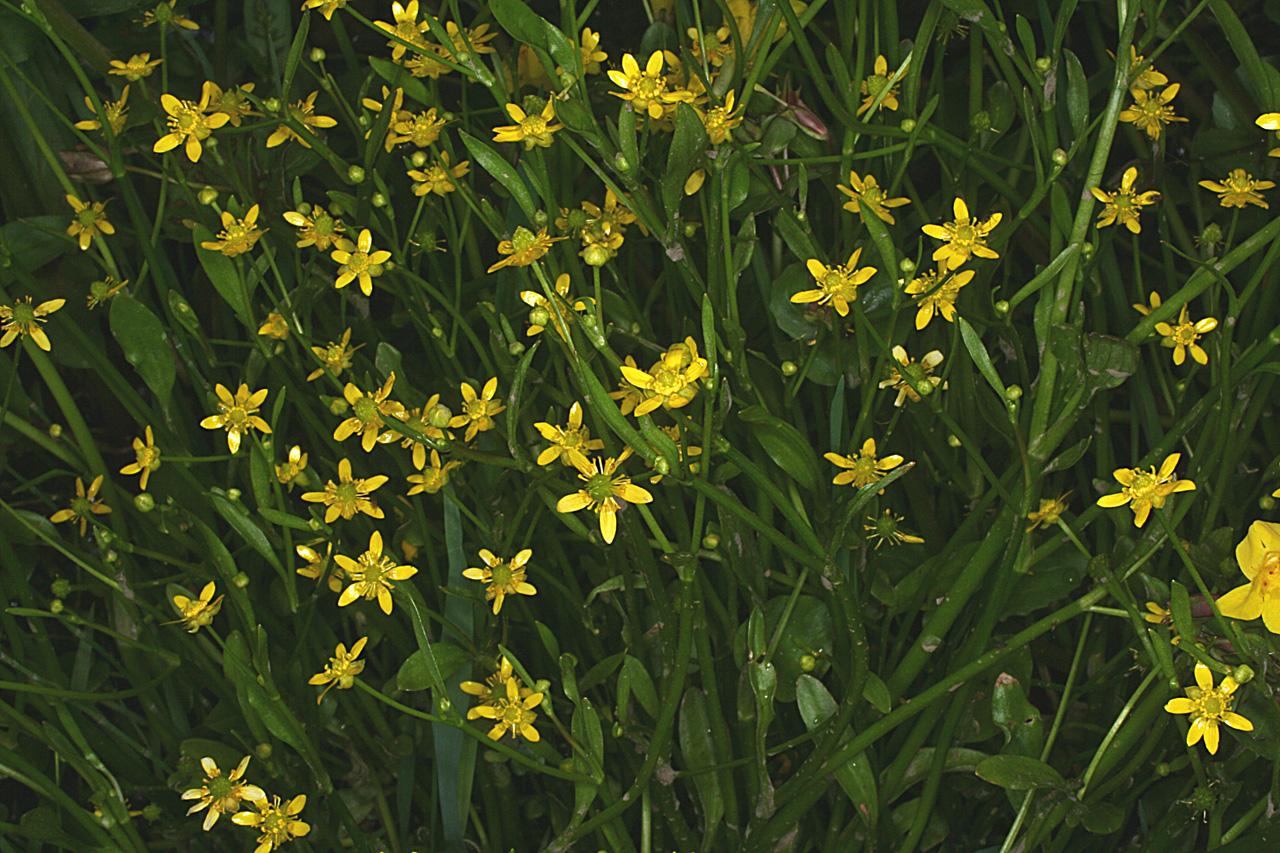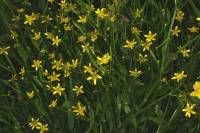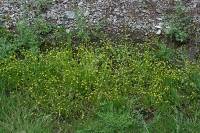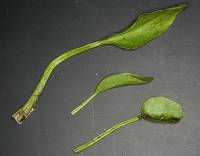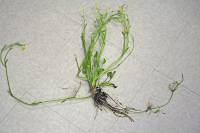Stems erect to prostrate, usually rooting nodally, glabrous or sparsely strigose. Roots not thickened basally, glabrous. Proximal cauline leaf blades lanceolate to oblanceolate or filiform, 0.7-6.5 × 0.04-1 cm, base acute to filiform, margins entire or serrulate, apex acute to filiform. Inflorescences: bracts lanceolate to oblanceolate. Flowers: receptacle glabrous; sepals 5, spreading or weakly reflexed, 1.5-4 × 1-2 mm, glabrous or appressed-hispid; petals 5-6, 2.5-7 × 1-4 mm; nectary scales glabrous. Heads of achenes globose or hemispheric, 2-4 × 3-4 mm; achenes 1.2-1.6 × 1-1.4 mm, glabrous; beak lanceolate to linear, straight or curved, 0.1-0.6 mm.
In Eurasia, this taxon is usually treated as two closely related species. Ranunculus flammula in the strict sense has relatively stout (0.8-3 mm thick) stems that are erect or ascending from prostrate bases, lanceolate to oblanceolate leaves 3-10 mm broad, sepals 3-4 mm, and petals 5-7 × 3-4 mm. Ranunculus reptans has slender (0.2-1 mm thick) stems that are usually prostrate except for the pedicels, leaves linear or filiform, to 2 mm broad, sepals 1-2 mm, and petals 3-5 × 1-2.5 mm. In North America, this distinction holds up relatively well east of the Great Plains, where plants with the characteristics of R . flammula in the strict sense are found in eastern Canada (Newfoundland and northern Nova Scotia) while plants with the characteristics of R . reptans are widespread. In the western part of the continent, however, the situation is much less clear. Collections from the Great Plains and Rocky Mountains resemble R . reptans in most characters, but they often have broader leaves (up to 5 mm broad). Plants from farther west are very confusing; specimens showing the typical morphology of R . flammula in the strict sense and R . reptans are found over a wide area, but most specimens from this area combine the characteristics of the two taxa in various ways. For this reason, it is not possible to separate these taxa at the species level. Three varieties are usually recognized, but further study will probably alter the varietal classification (see comments below, under R . flammula var. ovalis ).
In Eurasia, this taxon is usually treated as two closely related species. Ranunculus flammula in the strict sense has relatively stout (0.8-3 mm thick) stems that are erect or ascending from prostrate bases, lanceolate to oblanceolate leaves 3-10 mm broad, sepals 3-4 mm, and petals 5-7 × 3-4 mm. Ranunculus reptans has slender (0.2-1 mm thick) stems that are usually prostrate except for the pedicels, leaves linear or filiform, to 2 mm broad, sepals 1-2 mm, and petals 3-5 × 1-2.5 mm. In North America, this distinction holds up relatively well east of the Great Plains, where plants with the characteristics of R . flammula in the strict sense are found in eastern Canada (Newfoundland and northern Nova Scotia) while plants with the characteristics of R . reptans are widespread. In the western part of the continent, however, the situation is much less clear. Collections from the Great Plains and Rocky Mountains resemble R . reptans in most characters, but they often have broader leaves (up to 5 mm broad). Plants from farther west are very confusing; specimens showing the typical morphology of R . flammula in the strict sense and R . reptans are found over a wide area, but most specimens from this area combine the characteristics of the two taxa in various ways. For this reason, it is not possible to separate these taxa at the species level. Three varieties are usually recognized, but further study will probably alter the varietal classification (see comments below, under R . flammula var. ovalis ).
Lvs entire or slightly toothed; pet obovate, mostly 3-7 mm, about twice as long as the sep; achenes 1.3-1.7 mm, the erect or ascending beak 0.2-0.5 mm. 2n=32. Sandy or muddy shores; circumboreal, s. to Mass., Pa., Mich., Minn., and the western cordillera. July-Sept. Our commonest phase is the circumboreal var. filiformis (Michx.) DC., slender, prostrate, and creeping, 1-5 dm long, sending up at each node a few lvs and a naked or few-lvd, 1-fld stem 3-15 cm, the lvs filiform or linear, with scarcely expanded blade to 1.5 mm wide; 2n=32. (R. reptans) The very similar var. ovalis (Bigelow) L. D. Benson, with expanded blades mostly 1.5-7 mm wide, is sporadic with us but common farther west. The chiefly Eurasian var. flammula, in our range restricted to N.S., is stouter, with ascending or reclining stems 1-5 dm, sometimes rooting at the lower nodes but not creeping, branched above and with several fls, and with the lvs mostly 3-10 mm wide.
Gleason, Henry A. & Cronquist, Arthur J. 1991. Manual of vascular plants of northeastern United States and adjacent Canada. lxxv + 910 pp.
©The New York Botanical Garden. All rights reserved. Used by permission.


